In Abstract Problems, Enrich. R presents a poetic meditation on the act of painting—its materiality, rhythm, and inherent uncertainties. Through his signature layering technique of superimposed strata and fluid paint compositions, the artist invites the viewer into a dialogue between form and emptiness, control and spontaneity, time and imperfection.
Drawing from the traditions of both Western and Eastern abstraction, Enrich. R’s practice is deeply influenced by the legacy of Mediterranean modernism, particularly artists such as Joan Miró, Antoni Tàpies, and Hernández Pijuan, while also engaging in a visual conversation with Mark Rothko, Lee Ufan, and Cy Twombly. His compositions are guided by an intuitive process of accumulation and erasure, where each mark, stain, and wash of color bears the imprint of time.
At the core of his approach lies an exploration of the surface—worn, textured, and layered like a palimpsest of memory. Working on raw, untreated canvases and aged supports, Enrich. R embraces the tension between gesture and restraint, creating paintings that appear at once delicate and raw, structured and ephemeral. The artist’s muted, earthy palette resonates with the natural landscapes of his native Igualada, Spain, where the intersection of industry and rurality has shaped his artistic sensibility.
In this exhibition, the notion of problems in abstraction becomes a generative force rather than an obstacle. Enrich. R’s compositions emerge from doubt, from the act of decision-making on the canvas—each stroke a response, an adjustment, a negotiation between instinct and thought. His work embodies a visual philosophy that recalls the Japanese principle of wabi-sabi, where beauty is found in imperfection, transience, and the marks left by time.
While deeply rooted in painting’s history, Abstract Problems also speaks to contemporary concerns—offering a space of introspection and silence in an era of visual and informational overload. Through its subtle harmonies and enigmatic gestures, the exhibition invites the viewer to pause, to engage with the nuances of material and process, and to find meaning in the unresolved.
Johann Alexis von Haehling
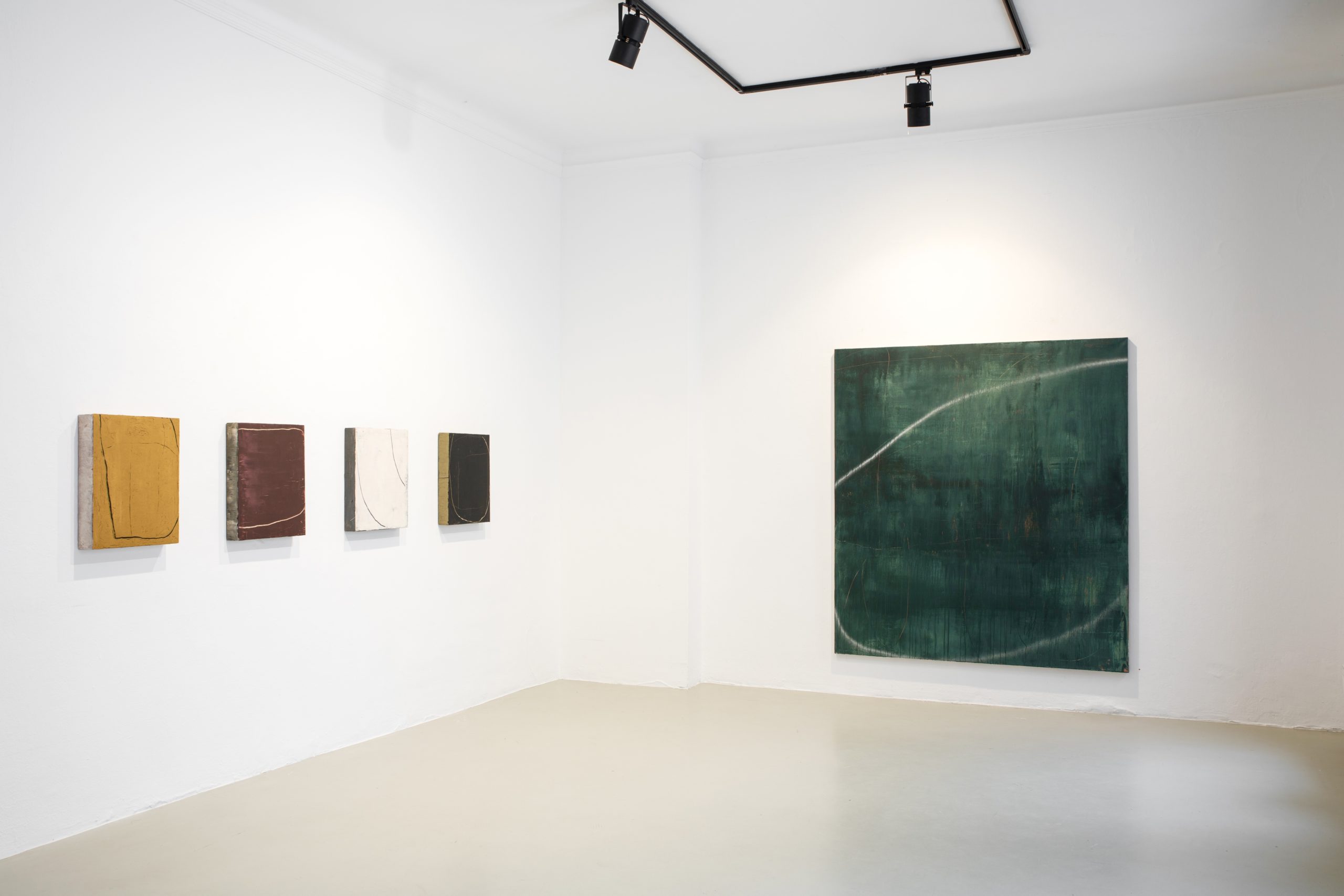
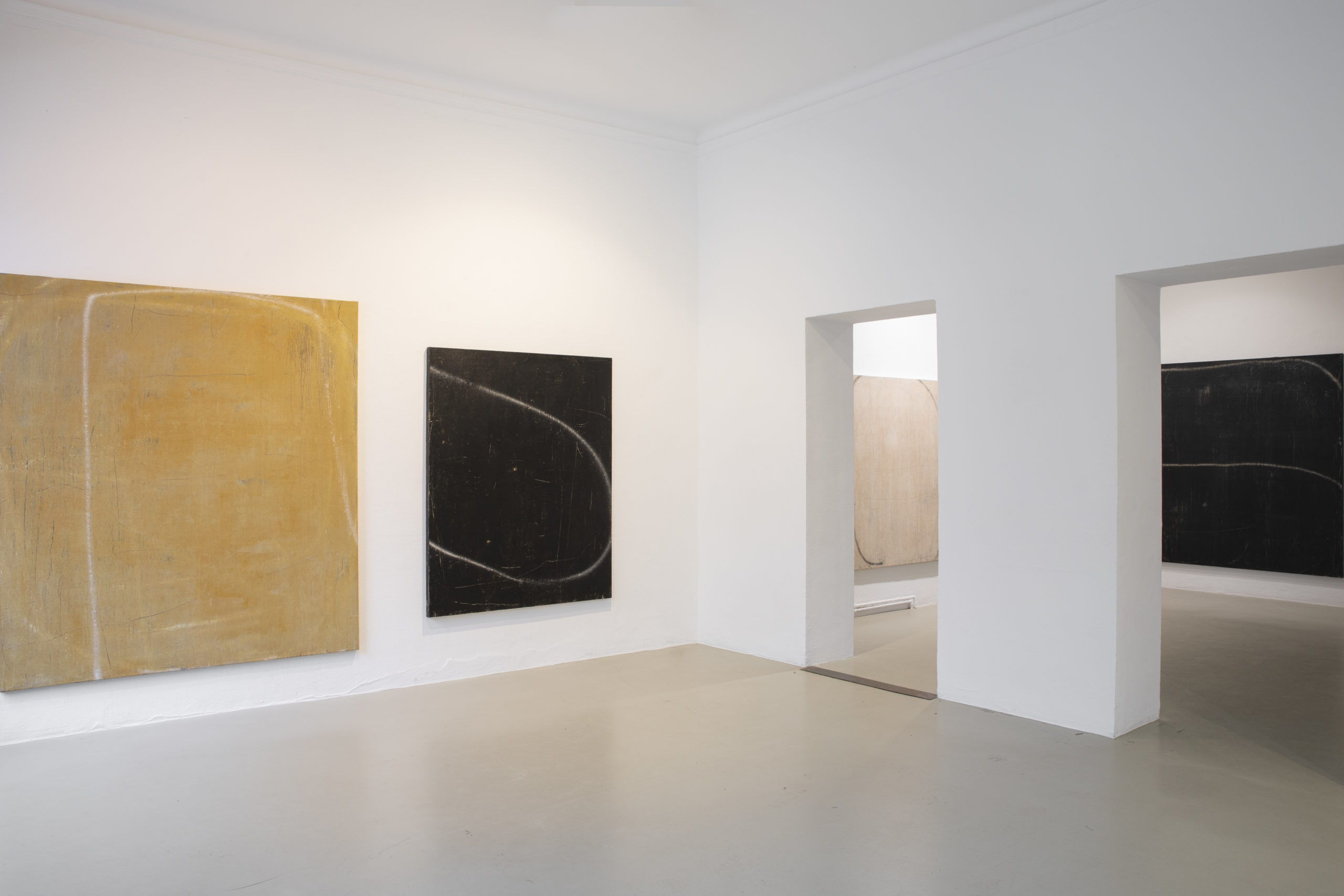
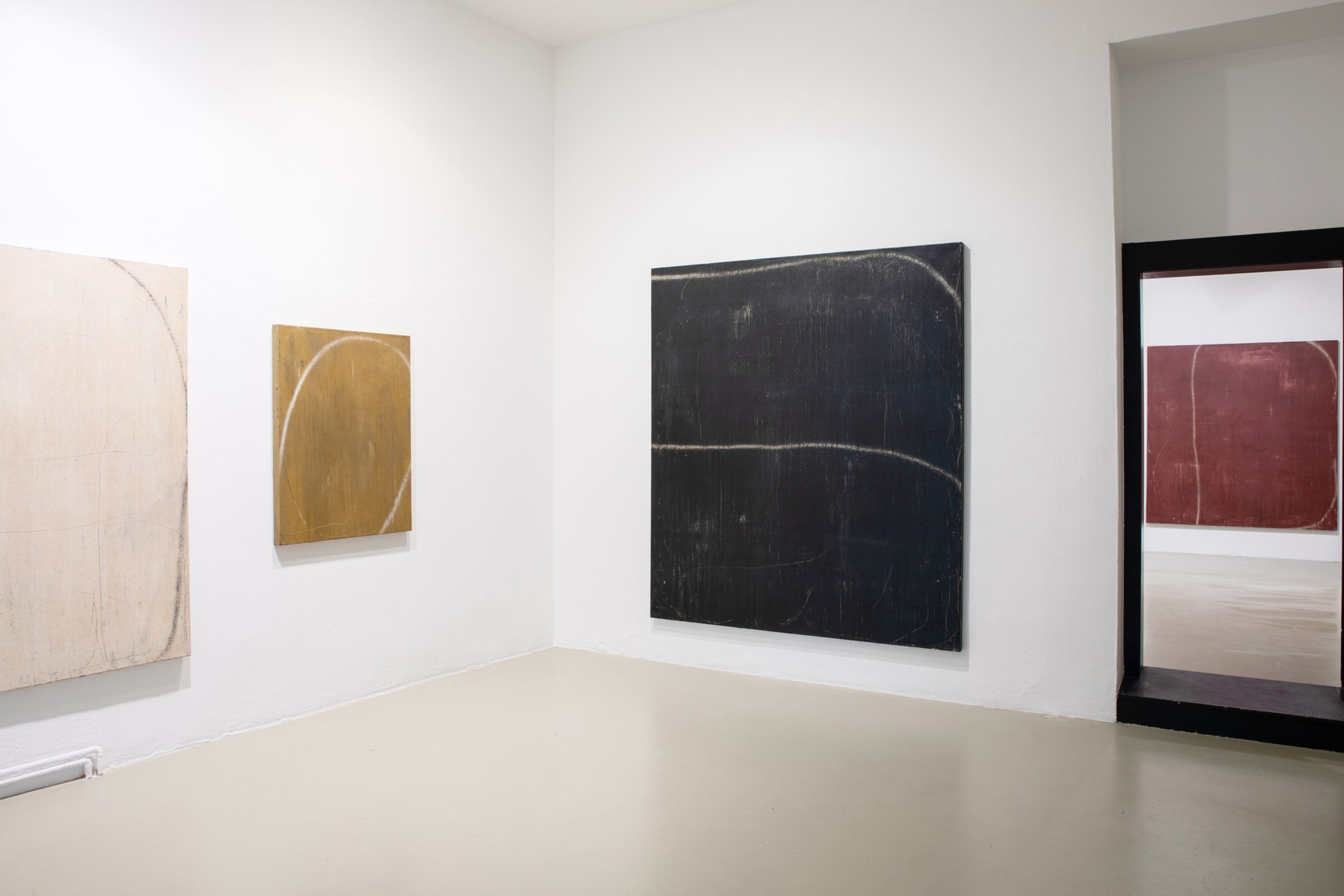
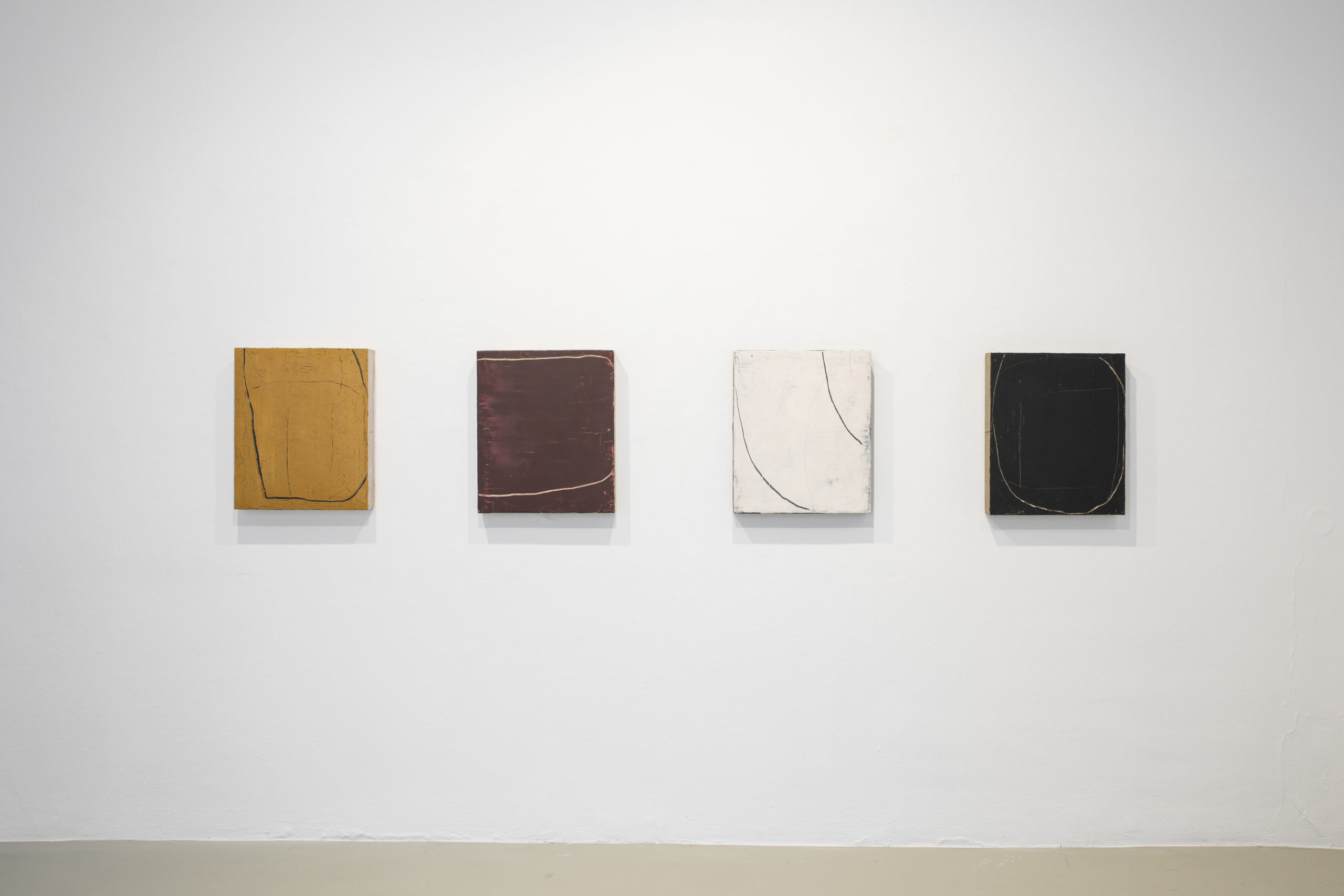
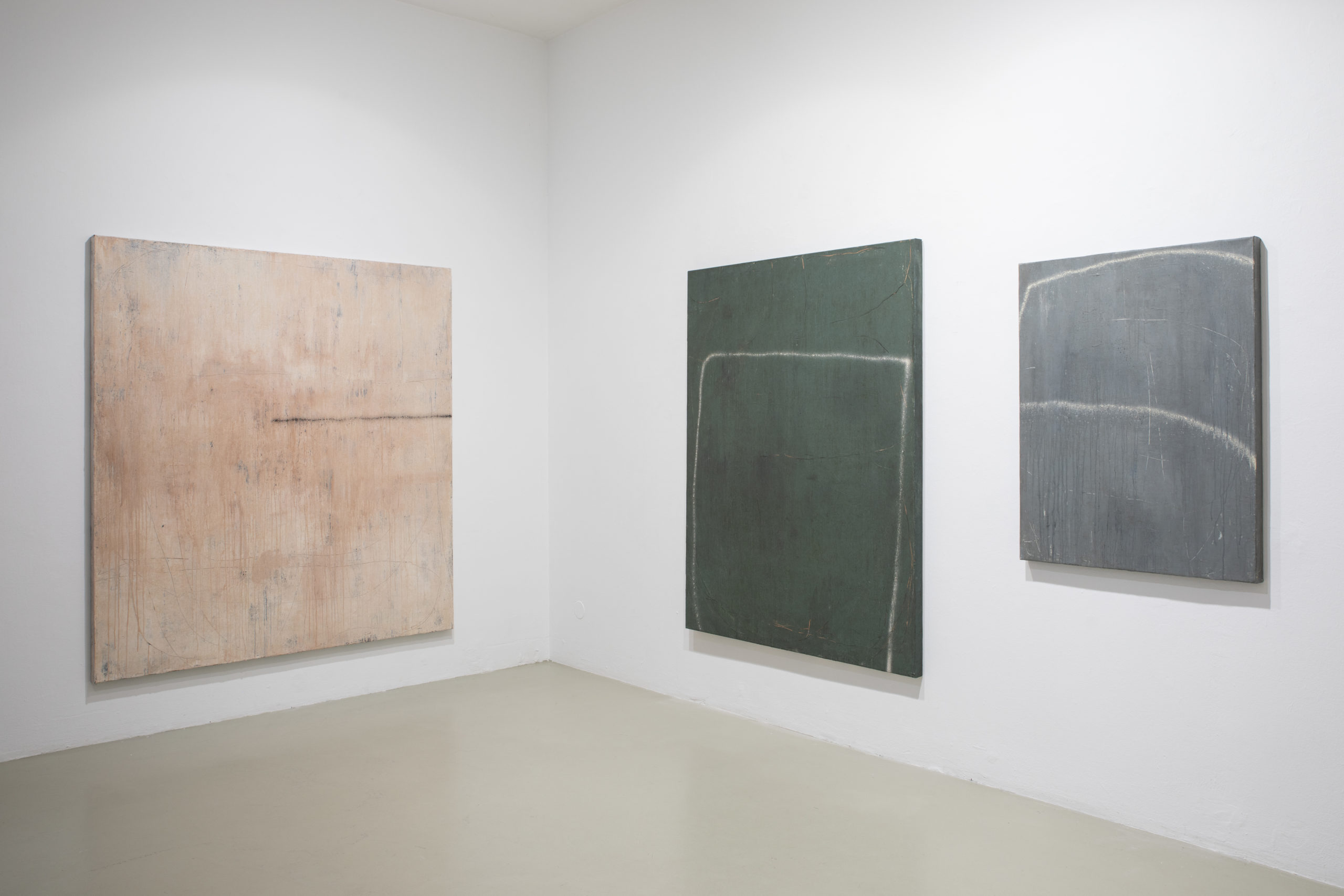
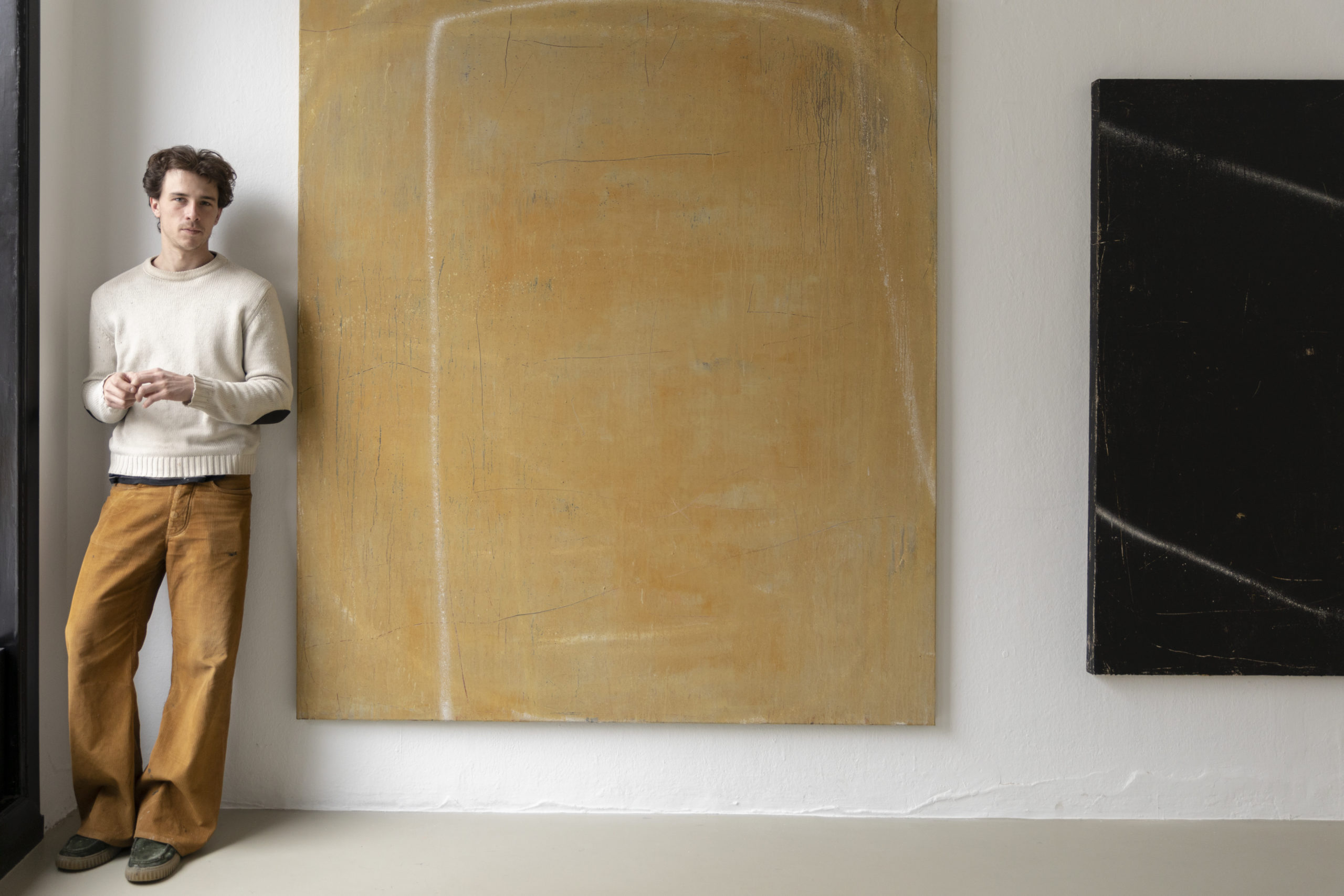
Interview with Enrich. R
Enrich, thank you for taking the time to speak with us today. Let’s begin with your roots. How has living and working in Igualada, Spain influenced your artistic practice?
Hi, happy to be here today.
Igualada has always been between the big city and the countryside, a hybrid that allowed me to experience both a rural and cosmopolitan environment. The older I get, the more it feels like a small town, but I also find its size perfect for working here.
When I was young, I spent a lot of time outdoors. I used to get very bored at home, I liked to go out and try to do something. The outskirts of the city felt like a new planet to discover. I did a lot of sports, music and also painted, but not though the same way I do now. Back then, it felt more like a distraction, an exercise in observation. I often went out to paint in the woods, enjoying the ritual of finding a subject in the landscape, and the paint it.
My father is a painter, and I have many memories of his studio, which is probably where I learned the craft. Currently, I work near his studio, and we occasionally meet.
I grew up in an industrial neighborhood full of old factories, as if time had stopped 100 years ago. Having my studio in a factory made me discover new ways of painting, where I found abstract. It’s a painting with infinite possibilities, but the challenge lies within oneself.
The Mediterranean, Western, and Eastern cultural heritages seem to interplay in your work. How do these influences come together?
It seems that today everything is globalized, and everyone is influenced by something, but deep down, no one can hide from their roots. From every place, you can learn something, but the goal of the painter is always the same, to narrate.
Yes, I see painting in the USA as more immediate, fast, large… It’s like there’s a rush for something. I like it because those images, within seconds, are etched in my memory, and sometimes that’s hard. When I was 7, I traveled to NYC, and I strongly remember the first time I saw a Newman, Pollock, and Rothko; I’ll always remember that.
My roots are in Catalonia, where great painters like Miró, Tàpies, Pijuan, and Barceló came from. They were my first exposure to painting after my father. It’s a kind of painting with less urgency, and I think the fact that we share the same landscape has helped me to connect with them naturally. Maybe, in some way, it’s close to Eastern art, with the idea that beauty is the result of the passage of time and the transfer of generations.
Your work is described as a “layering strategy of superimposed stratums and mixed paint compositions.” Can you elaborate on how you approach this process?
The impulse of paint often leads to create new surfaces without knowing where they will take me. The trial and error process helps me discover colors and ways of working with the same motif. I believe many of my works hide doubts and colors inside them that at the end lead me to the final result.
Your art seems to invite viewers into a space of silence and introspection. How do you think that is contemporary?
When I paint, I try to stop at unexpected moments, when the painting is still fresh. Working with water makes the drawing dynamic; it allows the painting once dry to remain alive. I think it has an approach to the void that makes time stop, whether by temperature or the air between elements a timeless image is appears.
Your influences include Rothko, Hernandez Pijuan, and Lee Ufan, among others. How and why have these artists shaped your vision?
What interests me about an artist, beyond any similarities in the way they work, is the way they think. The idea of telling the same values of humanity’s history with a personal voice.
I’ve always felt a certain nostalgia for painters of the last century, whether it’s because of their work or perhaps because of their lives. Brancucci, Tàpies, Judd, Twombly, Flavin, Long, Schnabel… These are artists whose work takes life of its own, becoming an idea beyond anecdote.
I also like some contemporary artists. Sometimes, I feel there’s a need to demystify those artists who have marked art history, and I think that’s important.
You’ve exhibited widely, from Girona to Brooklyn and Bali. How do different audiences around the world respond to your minimal work?
I don’t think there’s too much difference between countries. As long as there’s a response from the audience, the paintings are already doing their job. Painting has been my excuse to travel and see the world, and I don’t think I’ll ever stop doing it. Even so, I like to work locally and then take it to the world.
The title of your upcoming show at Circle Culture Gallery Berlin in early 2025 is “Abstract Problems.” How would you describe this? You spoke about challenges, mirroring, communication, thoughts of making, fate, and the journey of painting. Could you elaborate further?
During the work sessions for this exhibition, I really enjoyed the literal act of painting and all the doubts that made me react on the canvas.
I retain in my memory colors, surfaces, light…, which then I try to resolve through each doubt, sometimes my phone helps me as an extension of my brain. I like painting that doesn’t have a political stance.
I thought “Abstract Problems” summed up well the idea of linking images created by decisions that work together with my instinct, and perhaps they could be extrapolated to other aspects of life. Being able to have control without falling into the rigidity of movement and understanding painting as a constant doubt.